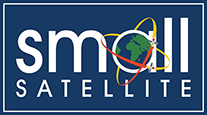Session
Session I: Year in Review-Enterprise
Location
Salt Palace Convention Center, Salt Lake City, UT
Abstract
In August 2024, Planet Labs PBC launched Tanager-1, a small satellite class hyperspectral satellite designed to detect methane point source emissions, developed through the Carbon Mapper partnership. In a short time, Tanager-1 began imaging and demonstrating the exceptional sensitivity of the onboard VSWIR imaging spectrometer designed by the Jet Propulsion Laboratory. The early performance of Tanager-1 signals a significant advancement in remote sensing capability made possible by an innovative public-private partnership bringing together commercial, non-profit, philanthropic, academic, and government entities.
Leveraging JPL-developed technology and Planet’s proven expertise in spacecraft development and operation, Tanager-1 acquires high-fidelity hyperspectral data across the 400-2500 nm spectral range. This Dyson-type spectrometer, optimized for sensitivity and spectral resolution, enables the identification of subtle spectral signatures, including but not limited to those associated with methane and carbon dioxide. With a swath width of 19 km and a swath length of up to 481 km, Tanager-1 can image large regions of the planet in one pass from its operational altitude of 406 km. The planned Tanager constellation can monitor key regions for emissions, agriculture, water quality, and resource extraction or be tasked to respond to emergencies such as Potentially Harmful Methane Events. Early on-orbit data of Tanager-1 has already yielded impactful results, pinpointing previously unknown super-emitters and providing critical data for emissions mitigation efforts.
This paper showcases the unique capabilities of Tanager-1, demonstrating its outstanding ability to detect and quantify methane and carbon dioxide point sources with high precision. Additionally, the paper will summarize the innovative instrument design, the utility of Planet’s Smallsat Platform, the partnership’s approach to development, robust on-orbit performance, and initial findings, emphasizing Tanager-1’s transformative potential for impact-driven space coalitions. Finally, the paper will reference the challenges and setbacks experienced on the way to launch and commissioning that can serve as lessons for the greater satellite community. This mission underscores Planet’s commitment to providing actionable insights for a sustainable future and serves as a crucial pathfinder for future high-performance hyperspectral constellations. This work is conducted in support of the Carbon Mapper mission and broader efforts to address climate change.
Document Type
Event
Advanced Hyperspectral Imaging From Orbit: Achievements and Challenges From the First Year of Tanager-1
Salt Palace Convention Center, Salt Lake City, UT
In August 2024, Planet Labs PBC launched Tanager-1, a small satellite class hyperspectral satellite designed to detect methane point source emissions, developed through the Carbon Mapper partnership. In a short time, Tanager-1 began imaging and demonstrating the exceptional sensitivity of the onboard VSWIR imaging spectrometer designed by the Jet Propulsion Laboratory. The early performance of Tanager-1 signals a significant advancement in remote sensing capability made possible by an innovative public-private partnership bringing together commercial, non-profit, philanthropic, academic, and government entities.
Leveraging JPL-developed technology and Planet’s proven expertise in spacecraft development and operation, Tanager-1 acquires high-fidelity hyperspectral data across the 400-2500 nm spectral range. This Dyson-type spectrometer, optimized for sensitivity and spectral resolution, enables the identification of subtle spectral signatures, including but not limited to those associated with methane and carbon dioxide. With a swath width of 19 km and a swath length of up to 481 km, Tanager-1 can image large regions of the planet in one pass from its operational altitude of 406 km. The planned Tanager constellation can monitor key regions for emissions, agriculture, water quality, and resource extraction or be tasked to respond to emergencies such as Potentially Harmful Methane Events. Early on-orbit data of Tanager-1 has already yielded impactful results, pinpointing previously unknown super-emitters and providing critical data for emissions mitigation efforts.
This paper showcases the unique capabilities of Tanager-1, demonstrating its outstanding ability to detect and quantify methane and carbon dioxide point sources with high precision. Additionally, the paper will summarize the innovative instrument design, the utility of Planet’s Smallsat Platform, the partnership’s approach to development, robust on-orbit performance, and initial findings, emphasizing Tanager-1’s transformative potential for impact-driven space coalitions. Finally, the paper will reference the challenges and setbacks experienced on the way to launch and commissioning that can serve as lessons for the greater satellite community. This mission underscores Planet’s commitment to providing actionable insights for a sustainable future and serves as a crucial pathfinder for future high-performance hyperspectral constellations. This work is conducted in support of the Carbon Mapper mission and broader efforts to address climate change.


